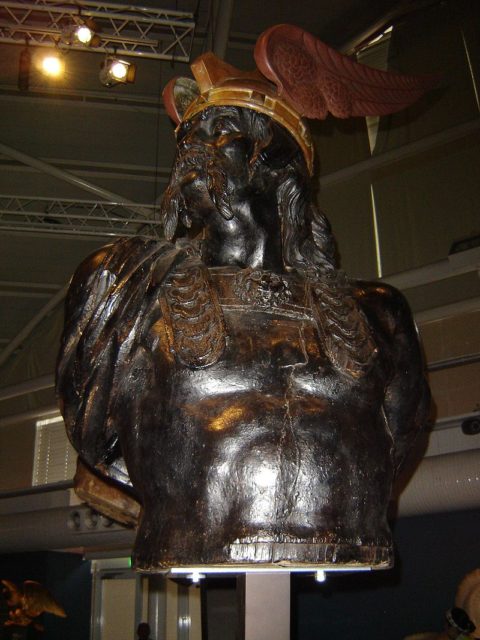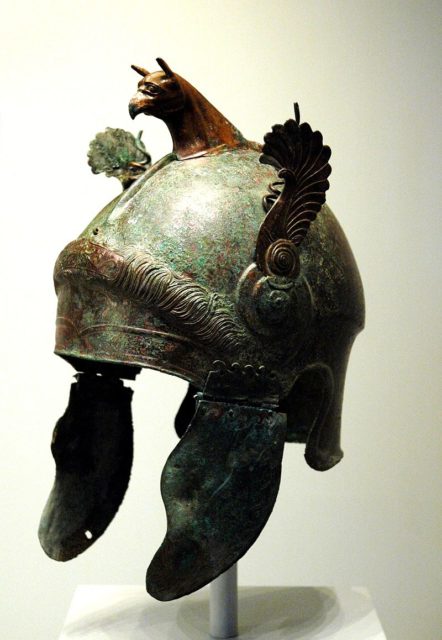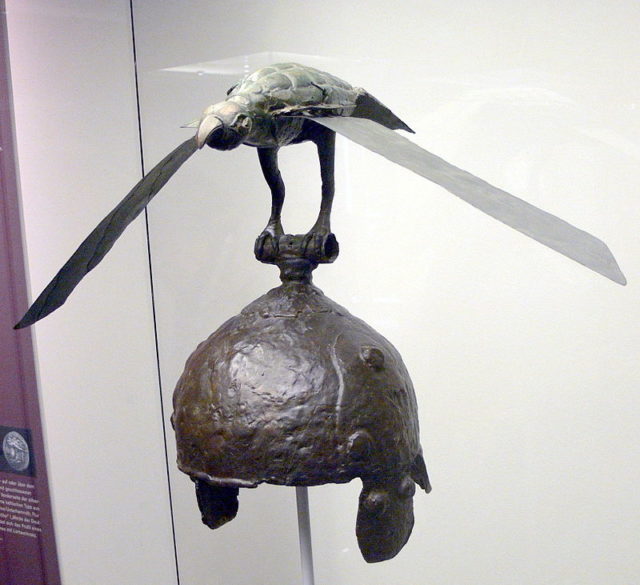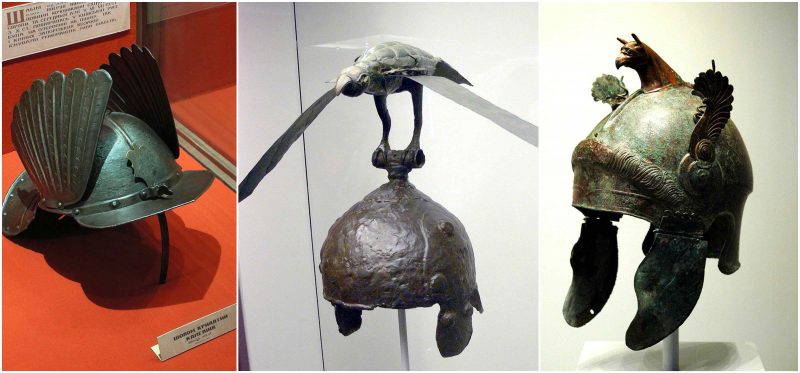One of the most recognizable European cartoon characters from the 1960s is Asterix, the little Gaul who wore a winged helmet, along with his sidekick, Obelix, and his little dog, Dogmatix. The image of the Gauls as members of the Celtic people wearing helmets adorned with wings has been proven wrong, but that does not mean that ancient peoples never wore them.
Ancient carvings and paintings of the Roman gods Hermes and Mercury show them wearing winged helmets. In the 19th century, artisans created romantic illustrations of the ancient gods of the Celts and Vikings wearing winged helmets. To this day, the depiction of Vikings with horned helmets endures, though this has been debunked as artistic license.
Examples of this type of helmet are some of the most beautiful renderings of ancient art yet discovered.
Bronze-winged helmet of Phrygian-Chalcidian type
This beautiful helmet, dating from the 4th century BC, must have been the prized possession of a high-ranking warrior and was probably used for ceremonial purposes.

It is made of bronze, and above the cheek pieces, decorated with images of the goddesses Artemis and Nike, is a beautifully crafted wing. Behind the wing is a coiled snake that is believed to have once held real feathers, and an eagle is embossed above the brow. At the back is a palmette that ends in a spiral pattern decorated with a lotus flower. The helmet can be seen in the Musée d’Art Classique de Mougins in Mougins, France.
Samno-Attic Helmet
This late 5th to early 4th century BC Samno-Attic helmet comes from Italy and is associated with the Samnite warriors that lived in central and southern Italy. Helmets evolved to match the type of warfare that the wearer was to fight, and this helmet is an example of helmets that were redesigned to allow the wearer to have greater visibility. It features an open-faced design and has cut-outs for the ears. This well-preserved helmet’s dome was beaten out from a single sheet of metal, and the wings and cheek pieces are still attached with their original rivets. The entire helmet is ringed with small holes that would have been used to lash a leather liner to the helmet.
Chalcidian Helmet
This bronze Chalcidian helmet would have been worn by a high-ranking warrior of Hellenic extraction in 4th and 5th century BC Greece or Southern Italy.

It was made of bronze and has a prominent arching ridge over the crown. It has been adorned with three plume holders in which the owner would have placed brightly colored feathers. An amulet featuring a gorgon is flanked by two griffins, and cheek pieces are riveted to the helmet.
Attic Helmet

This ceremonial Attic helmet from Southern Italy dates back to 300 BC. This type of helmet was thought to have originated in classical Greece (5th and 4th centuries BC).
Celtic Helmet
This Celtic winged helmet was found in Romania and has been dated to the 3rd century BC. The bird, either an eagle or a raven, has been mounted on the top of the helmet with its wings outspread. These wings have been cleverly constructed to be articulated at the body so they would have moved up and down as the wearer moved. Though this helmet has been attributed to the Celts, they would normally have worn simple conical helmets of the “Montefortino” type.

All these helmets show a great deal of attention to decoration and are examples of exquisite antique craftsmanship. Throughout the ages, and subsequently in modern depictions, wings have been used to depict speed, and birds, especially the eagle, display superiority.
These helmets reflect ancient mans’ desire to honor the same characteristics; each of these beautiful examples is designed for high-ranking members of the armed services.
